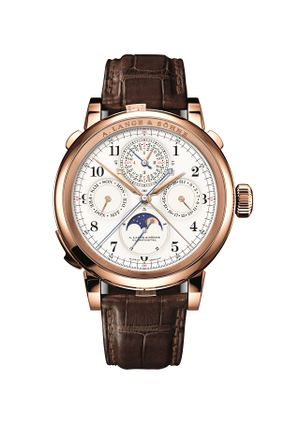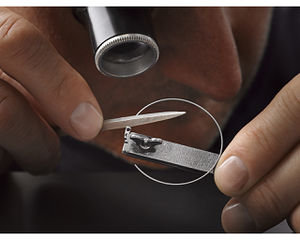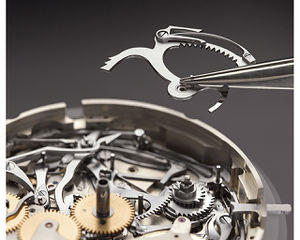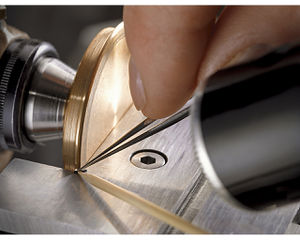The genesis of a masterpiece
A. Lange & Söhne delivers the first GRAND COMPLICATION

Glashütte, June 2016
In January 2013, A. Lange & Söhne presented the most complicated wristwatch ever built in Germany. Only six of these oeuvres will ever be crafted, and the first one has now been handed over to its owner. The assembly of the movement alone requires an entire year for each watch. Meanwhile, some of the countless steps involved in the making of this micromechanical masterpiece have been photographically documented.
The GRAND COMPLICATION is a homage to the grand tradition of Saxon precision watchmaking and also marks the dawn of a new era in the history of A. Lange & Söhne. According to Lange’s Product Development Director Anthony de Haas, the development of this complication and its fascinating chiming mechanism “unleashed creative momentum among our product designers and opened up a wide passageway for new solutions.”
The GRAND COMPLICATION incorporates a grand and small strike, a minute repeater, a split-seconds chronograph with a minute counter and flying seconds, as well as a perpetual calendar with a moon-phase display. Only the most talented and experienced watchmakers have the skills needed to master the challenges associated with the assembly and intricate adjustment of the 876-part movement. And even they need a whole year to get the job done. The task requires in-depth expertise, concentration, dexterity, and – above all – patience.
This is because the assembly process also includes exhaustive tests, especially to ensure correct functioning of the chiming mechanism. For this purpose, the strikes are recorded in 24-hour cycles over a period of several weeks. The subsequent evaluation of the recordings is performed to confirm that the mechanism properly sounds all quarter hours. If this is not the case, it must be completely disassembled, readjusted, reassembled and tested again. “Free without play”: This is the – actually physically impossible – instruction passed on to the watchmaker as a description of the ideal interaction of the moving parts of a chiming mechanism.
Some of the most important of the thousands of steps needed on the way to the genesis of a horological masterpiece:
Filing the gongs
The quality of the gongs determines the sonority of the chiming mechanism. The alloy, the hardness, the shape, the attachment – the engineers and technologists have found the optimal solution for every detail, no matter how insignificant it may seem. Here, the foot of the gong is fashioned into a triangular shape with a diamond file so it can vibrate better when struck.
Assembly of the racks
The three racks of the chiming mechanism are key elements that control the hour, quarter-hour and minute strikes. The quarter rack shown here triggers one to three double strikes for 15, 30 and 45 minutes after the top of the hour. It is made of hardened steel and decorated with straight graining on the upper side.
Assembly of the gathering pallets
The gathering pallets are deflected by the teeth of the racks. Via arbors, they are connected to the hammers which strike the gongs and generate the sounds. The gathering pallets are made of hardened steel and must be painstakingly fine-tuned by hand to ensure pure sonority.
Grinding the chiming mechanism lever
The chiming mechanism is powered by a separate spring barrel and features its own wheel train with a lever escapement that ensures the uniform operation of the mechanism. The shape of this lever is so complex that after it has been mechanically produced, it has to be manually adjusted with a brass disc and abrasive paste.



